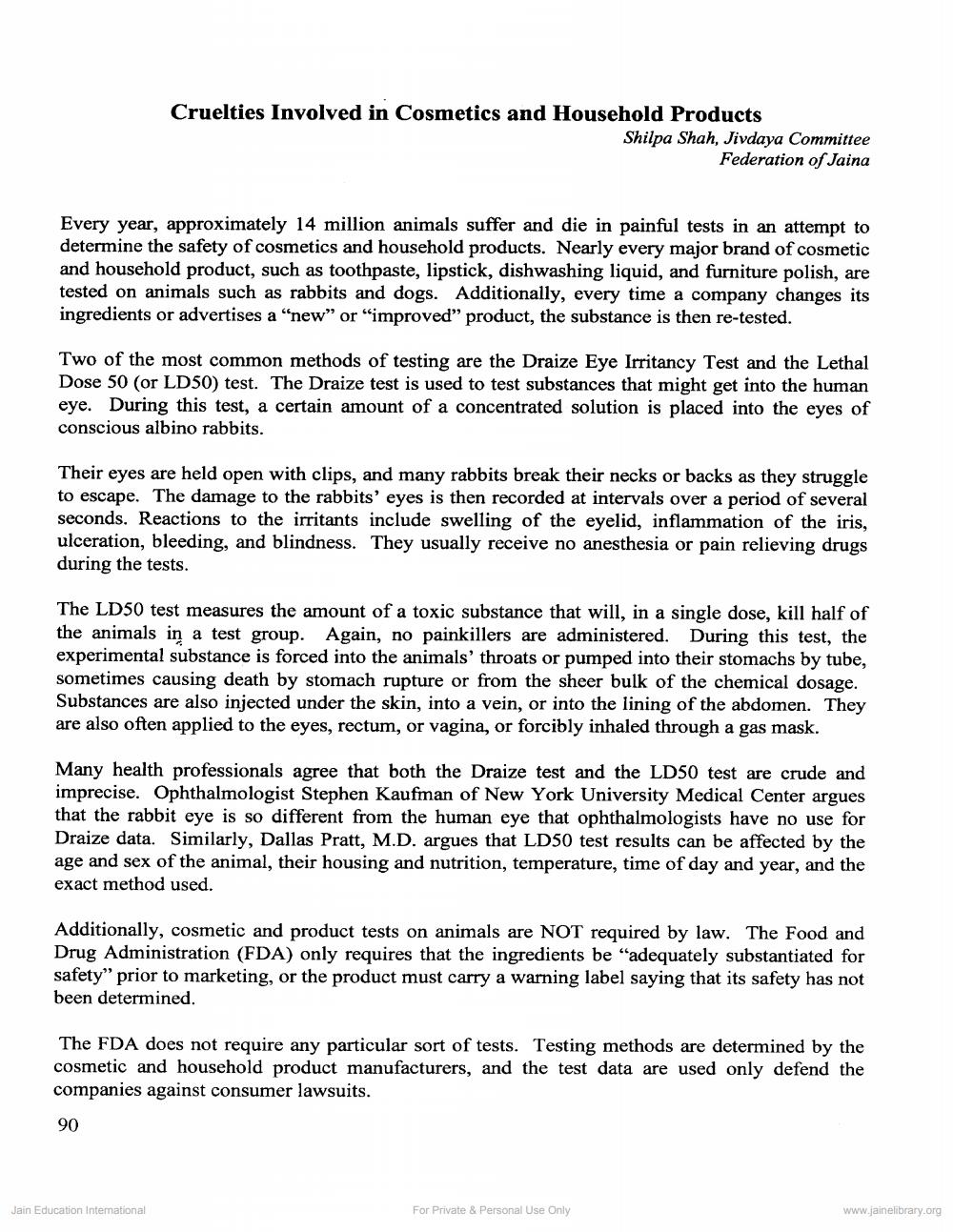________________
Cruelties Involved in Cosmetics and Household Products
Every year, approximately 14 million animals suffer and die in painful tests in an attempt to determine the safety of cosmetics and household products. Nearly every major brand of cosmetic and household product, such as toothpaste, lipstick, dishwashing liquid, and furniture polish, are tested on animals such as rabbits and dogs. Additionally, every time a company changes its ingredients or advertises a "new" or "improved" product, the substance is then re-tested.
Two of the most common methods of testing are the Draize Eye Irritancy Test and the Lethal Dose 50 (or LD50) test. The Draize test is used to test substances that might get into the human eye. During this test, a certain amount of a concentrated solution is placed into the eyes of conscious albino rabbits.
Shilpa Shah, Jivdaya Committee Federation of Jaina
Their eyes are held open with clips, and many rabbits break their necks or backs as they struggle to escape. The damage to the rabbits' eyes is then recorded at intervals over a period of several seconds. Reactions to the irritants include swelling of the eyelid, inflammation of the iris, ulceration, bleeding, and blindness. They usually receive no anesthesia or pain relieving drugs. during the tests.
The LD50 test measures the amount of a toxic substance that will, in a single dose, kill half of the animals in a test group. Again, no painkillers are administered. During this test, the experimental substance is forced into the animals' throats or pumped into their stomachs by tube, sometimes causing death by stomach rupture or from the sheer bulk of the chemical dosage. Substances are also injected under the skin, into a vein, or into the lining of the abdomen. They are also often applied to the eyes, rectum, or vagina, or forcibly inhaled through a gas mask.
Many health professionals agree that both the Draize test and the LD50 test are crude and imprecise. Ophthalmologist Stephen Kaufman of New York University Medical Center argues that the rabbit eye is so different from the human eye that ophthalmologists have no use for Draize data. Similarly, Dallas Pratt, M.D. argues that LD50 test results can be affected by the age and sex of the animal, their housing and nutrition, temperature, time of day and year, and the exact method used.
Additionally, cosmetic and product tests on animals are NOT required by law. The Food and Drug Administration (FDA) only requires that the ingredients be "adequately substantiated for safety" prior to marketing, or the product must carry a warning label saying that its safety has not been determined.
90
The FDA does not require any particular sort of tests. Testing methods are determined by the cosmetic and household product manufacturers, and the test data are used only defend the companies against consumer lawsuits.
Jain Education International
For Private & Personal Use Only
www.jainelibrary.org




